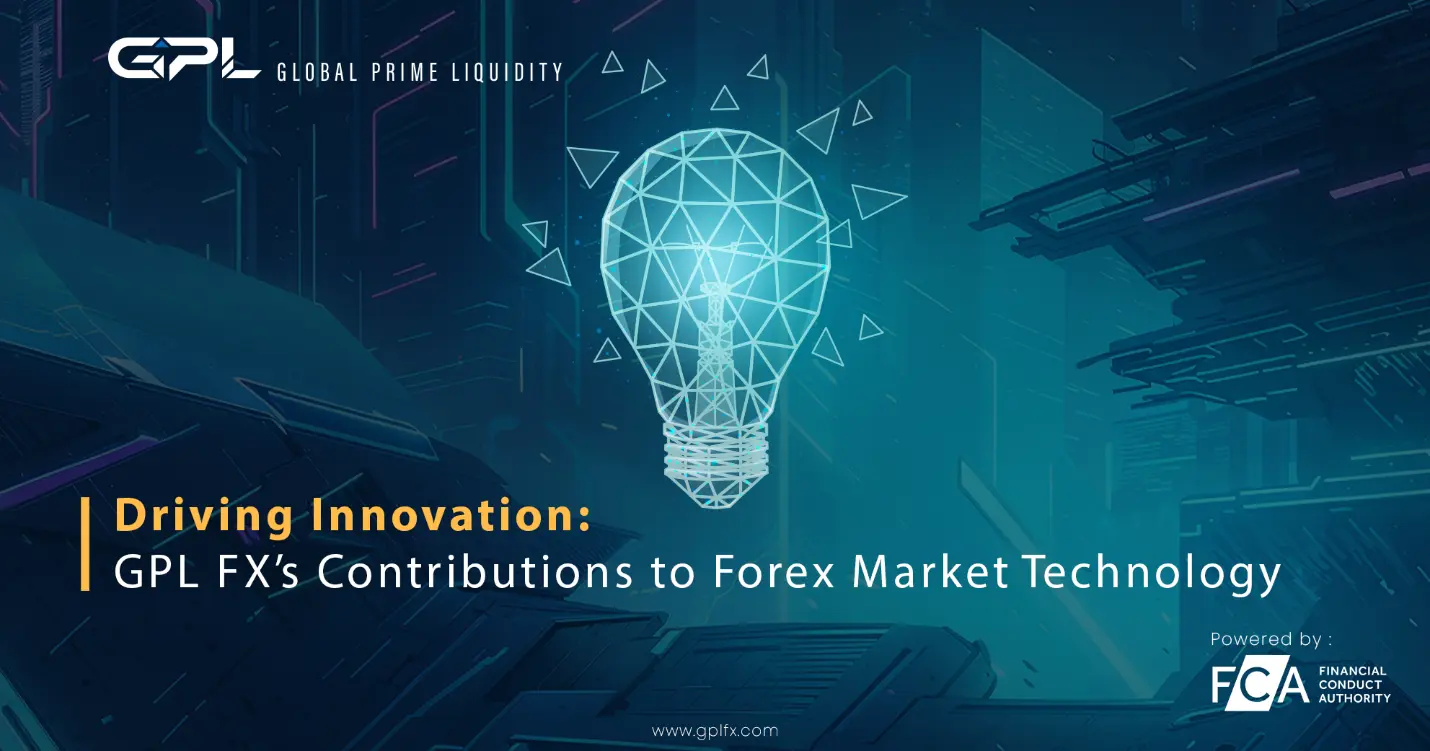Finance
A Comprehensive Guide About Bad Credit Loan

When it comes to borrowing money, having bad credit can make the process challenging. Lenders are often wary of providing loans to individuals with low credit scores. If you find yourself in need of financial assistance, there are options available to you. Understanding your bad credit loan terms is crucial to make informed decisions and improve your financial situation. Having a clear understanding of your bad credit loan terms is essential to ensure you can manage your finances effectively. Know the key aspects of bad credit loans and what you need to consider.
What are Bad Credit Loans?

Bad credit loans are financial products specifically designed for individuals with low credit scores or poor credit histories. These loans provide an opportunity for people with bad credit to access funds when they need them the most. It’s important to note that bad credit loans often come with higher interest rates and stricter terms compared to traditional loans. Lenders take on a higher risk by lending to individuals with bad credit, and they adjust their terms accordingly.
Types of Bad Credit Loans
1. Payday Loans
Payday loans are short-term loans typically designed to cover unexpected expenses or bridge financial gaps until your next paycheck. These loans are usually due on your next payday and often come with high-interest rates.
2. Installment Loans
Installment loans allow borrowers to repay the loan amount in fixed monthly installments over a specified period. These loans can be secured or unsecured, depending on the lender’s requirements.
3. Secured Loans
Secured loans require collateral, such as a car or property, to secure the loan. This collateral acts as a safety net for the lender in case the borrower defaults on payments. Secured loans generally have lower interest rates compared to unsecured loans.
4. Unsecured Loans
Unsecured loans do not require collateral and are solely based on the borrower’s creditworthiness. These loans often have higher interest rates and more stringent eligibility criteria.
Some Factors to Consider Before Applying for a Bad Credit Loan

Before applying for a bad credit loan, it’s crucial to consider certain factors to ensure you make an informed decision. Here are some key points to keep in mind.
1. Assess Your Financial Situation
Take a close look at your finances to determine how much you can afford to borrow and repay comfortably. Analyze your income, expenses, and existing debts to understand your financial capabilities. You need to clear everything about the income sources, and how can you manage the installment for repayment of bad credit loans.
2. Understand the Loan Terms and Conditions
Thoroughly review the loan terms and conditions before signing any agreement. Pay attention to the interest rate, repayment period, fees, and any additional charges. Ensure you understand all the terms and seek clarification if anything is unclear.
3. Rate of Interest
This is an important factor when we apply for and choose a Personal Loan with a bad credit score. You need to find online and offline personal loan providers that provide loans for bad credit scores. Compare the Interest rates and choose the best one.
4. Research Multiple Lenders
Don’t settle for the first lender that approves your application. Shop around and compare offers from different lenders. Look for reputable lenders with reasonable terms and competitive interest rates. You need to find bad credit loan lenders online, and offline, and get suggestions from someone who is taken from a good lender and company.
5. Improve Your Credit Score
While bad credit loans are available for individuals with poor credit, taking steps to improve your credit score can help you secure better loan terms in the future. Pay your bills on time, reduce your debt, and check your credit report for any errors. Making the Payment of all bills and installments in a timely is one of the best ways to increase your bad credit score.
FAQs
Yes, some lenders offer bad credit loans with no credit checks. However, these loans often come with higher interest rates and may have stricter repayment terms. It’s important to carefully consider the terms before accepting such a loan.
The maximum loan amount you can get with bad credit depends on various factors, including the lender’s policies, your income, and the loan type. Some lenders may have a cap on the loan amount they provide to borrowers with bad credit.
When you apply for a bad credit loan, the lender may perform a hard credit inquiry, which can temporarily lower your credit score. If you make timely payments on your loan, it can help improve your credit score over time.
Yes, a bad credit loan can be used to consolidate multiple debts into a single loan with a lower interest rate. This can make it easier to manage your payments and potentially save money on interest charges.
If you default on a bad credit loan, the lender can take legal action to recover the amount owed. This may include collection efforts, wage garnishment, or even filing a lawsuit against you. It’s crucial to make timely payments to avoid these consequences.
In most cases, yes, you can repay a bad credit loan early. Some lenders may charge prepayment penalties or fees for early repayment. It’s important to check the terms and conditions of your loan before making early payments.
Conclusion
Understanding your bad credit loan terms is vital for managing your finances effectively and making informed decisions. While bad credit loans may come with higher interest rates and stricter terms, they can provide a lifeline during financial emergencies. Assess your financial situation, research lenders, and carefully review the terms before applying for a bad credit loan. By doing so, you can take control of your financial future and work towards improving your creditworthiness.

Finance
Secure Your NFT Experience: Expert Tips for Using Treasure NFT Login Securely and Effectively

If you’re diving into the world of NFTs through the Treasure ecosystem, you’ve likely heard about logging in with your wallet—no passwords, no usernames, just Web3. But with that convenience comes risk. In 2025, as NFT platforms grow in popularity, so do security threats targeting user wallets.
Whether you’re trading on Trove, playing Bridgeworld, or just exploring your digital assets, knowing how to use Treasure NFT login safely is crucial. This guide walks you through expert tips to help you log in confidently, protect your assets, and make the most of the Treasure experience, without falling into common traps.
What Is Treasure NFT Login?
Treasure NFT Login is a secure, wallet-based method that allows users in the UK and globally to access the Treasure ecosystem, which includes gaming projects like Bridgeworld and NFT marketplaces like Trove. Instead of creating usernames or passwords, users log in with Web3 wallets such as MetaMask, Coinbase Wallet, or WalletConnect, supported on the Arbitrum network.
As of mid-2025, MAGIC—the native token—trades at around £0.11, with over 300 million tokens in circulation and active engagement from UK-based gamers, collectors, and Web3 investors. This login method provides easy access, enhanced privacy, and strong cryptographic security.
How Does Treasure NFT Login Work?
Treasure NFT login uses Web3 wallet authentication instead of traditional usernames or passwords. When you visit a Treasure platform—like Trove, Bridgeworld, or MagicSwap—you click “Connect Wallet” and choose your crypto wallet (such as MetaMask, Coinbase Wallet, or a WalletConnect option). This prompts your wallet to digitally sign a request, confirming you own the wallet without revealing your private keys.
Your login is tied to your wallet address, and all activity (like trading, staking, or playing) is recorded on-chain via the Arbitrum network. This decentralised login approach ensures that you remain in full control of your digital identity and assets. As of 2025, over 150,000 active monthly users rely on this seamless, secure method to access Treasure’s NFT-powered ecosystem.
Step-by-Step Guide to Access Treasure NFT Login
Step 1: Set Up a Web3 Wallet
To begin, download and install a trusted Web3 wallet such as MetaMask, Coinbase Wallet, or any WalletConnect-compatible app. MetaMask is the most commonly used and works as both a browser extension and a mobile app. After installation, create your wallet and securely store your 12-word seed phrase offline. This seed phrase is your recovery key—never share it or store it online.
Step 2: Add the Arbitrum Network
Treasure operates on Arbitrum, a Layer 2 blockchain that offers faster and cheaper transactions than Ethereum. If you’re using MetaMask, you’ll need to manually add the Arbitrum One network. Go to the MetaMask settings, click on “Networks,” and add the Arbitrum RPC details (available from official sources). Alternatively, you can use Chainlist.org to add Arbitrum with one click.
Step 3: Buy or Bridge ETH to Arbitrum
To interact with Treasure dApps, you’ll need ETH on the Arbitrum network for gas fees. If you’re based in the UK, you can purchase ETH using local exchanges like Binance UK or Coinbase UK. After purchasing, use the official Arbitrum Bridge to transfer ETH from the Ethereum Mainnet to Arbitrum. This process typically takes a few minutes and requires confirmation through your wallet.
Step 4: Visit the Official Treasure Website
Once your wallet is set up and funded, head over to https://treasure.lol, the official Treasure homepage. It’s essential to bookmark this verified URL, as fake or phishing sites targeting Web3 users are common. Only interact with the official Treasure site to ensure your login and wallet remain secure.
Step 5: Click “Connect Wallet.”
On the Treasure homepage, locate the “Connect Wallet” button, usually in the top-right corner. Clicking it will open a prompt asking you to select your wallet (MetaMask, WalletConnect, etc.). Choose your wallet and approve the digital signature request. This verifies your ownership without exposing your private keys and successfully logs you into the Treasure ecosystem.
Step 6: Access Trove, Bridgeworld, or MagicSwap
After connecting your wallet, you can now navigate to any of Treasure’s key applications. Use Trove to buy, sell, or view your NFTs. Access Bridgeworld to manage in-game characters and assets. Visit MagicSwap to exchange MAGIC and other tokens. The same login works seamlessly across all these platforms, eliminating the need to re-authenticate each time.
Step 7: Stay Secure While Logged In
Security should always be top priority. Never share your seed phrase, even with someone claiming to be a support. Periodically review and revoke token or app permissions using tools like Revoke.cash. Avoid using public Wi-Fi when logging in, and consider upgrading to a hardware wallet such as Ledger or Trezor if you own high-value NFTs. Bookmarking the official site and enabling 2FA on your wallet app adds additional layers of protection.
Expert Tips for Using Treasure NFT Login
1. Choose the Right Wallet Type
Use either a hardware wallet (like Ledger or Trezor) or a reputable non-custodial software wallet (e.g., MetaMask, Coinbase Wallet). According to the Chainalysis 2025 Crypto Crime Report, 43.8% of crypto theft in 2024 resulted from private key compromises. Hardware wallets keep your keys offline and provide a robust layer of protection, ideal for securing high-value NFTs and MAGIC tokens across the Treasure ecosystem.
2. Authenticate via Digital Signatures
Treasure uses Web3 login, meaning you prove ownership of your wallet by signing a unique message—no passwords involved. This method aligns with the UK’s new legislation that treats crypto assets as personal property, reinforcing legal protections for authenticated digital asset ownership. Every login is cryptographically verified on-chain, ensuring accountability without compromising privacy.
3. Always Use Verified Sites
Stick to official domains like treasure. lol, market.treasure.lol, and approved subdomains. In the UK, crypto-related scams surged—investment fraud alone cost victims over £144 million in 2024, while online fraud losses exceeded £649 million. Bookmark trusted site URLs and cross-check every link before connecting your wallet.
4. Regularly Audit Wallet Permissions
After logging in, dApps request permissions via smart contracts. Use tools like Revoke. cash to check and revoke access for unused or suspicious contracts. With UK scam losses in 2024 hitting over £1.17 billion, managing on-chain permissions is essential to prevent unauthorized asset transfers.
5. Keep Software Up to Date
Whether you’re using browser extensions (like MetaMask), mobile wallets, or your Arbitrum-compatible browser, always install the latest updates. Across crypto ecosystems, failures to patch vulnerabilities contributed to over £1.5 billion in illicit transactions in 2023, according to TRM Labs. Updated software helps shield you from known exploits.
6. Use Secure Networks & Enable 2FA/Biometrics
Avoid logging in via public or unsecured Wi‑Fi. Instead, use trusted home or VPN connections. Also, enable biometric login or two-factor authentication on wallet-compatible apps such as Coinbase Wallet. 2025 sees more AI-enhanced phishing and deepfake scams, making strong access controls critical .
7. Enable Real-Time Wallet Alerts
Many wallets, including MetaMask Mobile and Coinbase Wallet, support real-time notifications for connection requests and transactions. UK crypto scams up 66% of investment fraud in 2024. Instant alerts allow you to quickly spot and stop unauthorised actions, especially useful if managing assets across multiple dApps.
8. Separate Gaming vs. Storage Wallets
Use one wallet for active interactions (e.g., Bridgeworld, MagicSwap) and another as a secure vault for high-value NFTs and MAGIC tokens. Chainalysis reports that nearly 44% of crypto thefts result from key compromises. By isolating your assets, any compromise in your interactive wallet won’t jeopardize your main holdings.
9. Educate Yourself on Smart Contract Risks
Before connecting your wallet to any Treasure-linked dApp (like Trove or Bridgeworld), take time to understand what permissions the contract is requesting. In 2025, UK-based users lost over £12.4 million in scams tied to malicious or buggy smart contracts, often due to rushed approvals or a lack of knowledge. Use community forums or Discord channels to verify contract legitimacy. Being informed protects you from accidentally granting access to drainable assets.
10. Use a Dedicated Device for Web3 Activities
If possible, use a separate browser profile or device (like an old smartphone or secondary laptop) solely for crypto and NFT use. This reduces the risk of cross-contamination from everyday apps or malware. According to the UK’s National Cyber Security Centre (NCSC), phishing and malware attacks accounted for 54% of reported digital asset breaches in 2024. A clean, crypto-only environment helps ensure your Treasure NFT login interactions remain uncompromised.
Common Login Issues and How to Fix Them
1. Wallet Not Connecting to Treasure
Issue: Your MetaMask or Web3 wallet won’t connect to the Treasure site.
Fix: First, ensure you’re visiting the official website: https://treasure.lol. Then refresh the page, log out of your wallet, and reconnect. If the issue persists, try using a different browser (like Brave or Firefox). Also, check if your wallet is unlocked and you’re logged in with the correct account.
2. Wrong Blockchain Network Selected
Issue: You’re connected to the wrong network (e.g., Ethereum Mainnet instead of Arbitrum).
Fix: Treasure operates on the Arbitrum One network. Open your wallet, go to the network settings, and manually switch to Arbitrum. You can also use a tool like Chainlist to automatically add the correct network.
3. Site Fails to Load or Shows a Blank Page
Issue: The Treasure site doesn’t load or is stuck.
Fix: Clear your browser’s cache and cookies, or try loading the site in incognito/private mode. Make sure browser extensions like ad blockers or privacy filters aren’t interfering. Using a VPN can help if there are regional access issues—some UK ISPs have been known to restrict DeFi sites intermittently.
4. “Signature Request Failed” or “Action Rejected”
Issue: You see an error when signing a message or confirming login.
Fix: Check that your wallet is updated and not in a locked state. If you accidentally rejected the request, simply reload the page and reconnect. On mobile, ensure you’re using WalletConnect properly and confirm on your device.
5. Stuck on WalletConnect QR Code Screen
Issue: You scan the WalletConnect QR code, but nothing happens.
Fix: Refresh the browser and the wallet app, and try reconnecting. Ensure both your mobile device and desktop are on the same internet connection and that the WalletConnect session is still active. In some cases, restarting your mobile app may be required.
6. Login Loops or “Disconnected” After Login
Issue: You log in, but the site loops or logs you out.
Fix: This is often caused by browser cookies or conflicting extensions. Clear your cookies or try using incognito mode. Also, disable extensions like MetaMask Snaps or aggressive privacy plugins if you have them installed.
7. Login Works, But NFTs or MAGIC Don’t Appear
Issue: You’ve logged in successfully, but your assets seem missing.
Fix: Double-check that you’re on the correct wallet address and the Arbitrum network. Refresh metadata in the platform (like Trove or Bridgeworld). Sometimes, NFTs may take a few seconds to load, especially during high-traffic times.
Why Secure Login Matters in the NFT World?
1. Your Wallet Holds Real Value
NFT wallets often store thousands of pounds in assets, including MAGIC tokens, in-game items, and rare NFTs. In the UK, the average Web3 wallet tied to Treasure holds between £1,200 and £4,500 in digital assets.
2. There’s No “Forgot Password” Option
Web3 login relies on your private key or seed phrase. If these are lost or stolen, you lose access permanently. In 2025, 43.8% of UK crypto thefts were linked to lost credentials or private key exposure.
3. Phishing & Scam Attacks Are Increasing
Scammers target NFT platforms with fake sites and Discord messages. UK losses from crypto fraud hit £144 million in 2024, with a sharp increase in login-related attacks.
4. Blockchain Transactions Are Irreversible
Once you approve a transaction through your wallet, it cannot be reversed. UK reports in 2025 cite 1,200+ wallet-draining cases, many due to unsafe login practices or careless approvals.
5. Your Wallet Is Your Web3 Identity
Logging in with your wallet doesn’t just give access to assets—it defines your presence in DAO governance, game history, and NFT ownership records. Losing this access damages your digital identity and participation rights. Around 74% of UK NFT holders actively engage in such decentralised communities.
Conclusion
As NFTs continue to evolve in 2025, protecting your wallet access is more important than ever. The Treasure NFT login system offers ease and interoperability, but it’s only as secure as the user behind it. By following these expert-level tips—from using hardware wallets to watching out for phishing—you can safeguard your assets and enjoy the full potential of the Treasure ecosystem without fear.
Disclaimer
This article is for educational purposes only. The information provided does not constitute financial advice or a security guarantee. Always verify official links and consult cybersecurity experts when managing high-value digital assets.
Finance
Driving Innovation: GPL FX’s Contributions to Forex Market Technology

At GPL FX, innovation is at the core of our mission to transform the forex trading landscape. Our dedication to advancing technology has driven us to develop cutting-edge solutions that enhance the trading experience and set new standards in the industry. Through our relentless pursuit of innovation, we have made significant contributions to forex market technology, reshaping how traders interact with the markets and achieve their trading goals.
From the outset, we recognized that technology would be a key differentiator in the competitive world of forex trading. Our commitment to creating a state-of-the-art trading platform has led to the development of advanced features that cater to the diverse needs of traders. By integrating sophisticated algorithms, real-time data processing, and powerful analytical tools, we have ensured that our platform remains at the forefront of technological advancements.
One of our notable contributions to forex market technology is the implementation of high-speed trading infrastructure. We understand that in the fast-paced forex market, speed is crucial. Our platform is designed to execute trades with minimal latency, allowing traders to react swiftly to market movements and capitalize on opportunities as they arise. This emphasis on speed and efficiency is a testament to our commitment to providing a seamless trading experience.
Another significant innovation is our use of artificial intelligence (AI) and machine learning in trading algorithms. By harnessing the power of AI, we have enhanced our platform’s ability to analyze vast amounts of market data, identify patterns, and generate predictive insights. These advanced technologies enable traders to make more informed decisions and develop sophisticated trading strategies based on real-time data and trend analysis.
Our contributions also extend to the development of mobile trading solutions. Recognizing the growing importance of mobile technology, we have invested in creating robust mobile applications that offer full trading functionality. Traders can access their accounts, execute trades, and monitor market conditions from their smartphones or tablets, providing them with the flexibility to trade effectively from anywhere in the world.
Security is another area where we have made significant strides. Our platform incorporates advanced encryption protocols and security measures to protect client data and transactions. We continually update our security infrastructure to address emerging threats and ensure that our clients can trade with confidence, knowing that their information is safeguarded against unauthorized access.
In addition to technological advancements, we have focused on enhancing the user experience through intuitive interface design and customizable features. Our platform is designed to be user-friendly, with a layout that allows traders to easily access the tools and information they need. Customizable features enable traders to tailor their trading environment to suit their individual preferences and strategies.
Our commitment to innovation is also reflected in our approach to market access. By partnering with multiple liquidity providers, we have created a multi-bank liquidity model that offers deep liquidity and competitive pricing. This model ensures that traders have access to a wide range of financial instruments and can execute trades with minimal slippage, enhancing their ability to navigate the forex market effectively.
As we continue to drive innovation in forex market technology, GPL FX remains dedicated to pushing the boundaries and setting new benchmarks in the industry. Our focus on high-speed trading, AI-driven analytics, mobile solutions, and robust security reflects our commitment to providing traders with the tools and technology they need to succeed. By staying at the forefront of technological advancements, we are shaping the future of forex trading and delivering exceptional value to our clients.
Business
Announcing The Best Futures Brokers In The UK For 2026

A comprehensive, independent comparison of the top exchange-traded futures brokers accepting UK clients. We analyze key factors including transparent commission schedules, low day-trading margin rates (e.g., for Micro contracts), available professional trading platforms, and minimum account requirements to help you choose a specialist provider.
Vantage Markets
First, Vantage Markets is one of the top FCA-regulated futures brokers in the United Kingdom. Trade a wide range of assets like forex, commodities, and precious metals. Plus, trade bonds, indices, and ETFs as well. In addition, Vantage Markets also has a wide range of tools – including custom charts and trading calculators. Trade on robust platforms like MT4, MT5, and ProTrader. Plus, access to low trading costs, 24-hour customer support, and negative balance protection. With Vantage Market’s V-Social app, you can also chat with other traders to ask questions and auto-copy experienced investors. In short, consider Vantage Markets as you consider the best futures brokers in the UK.
Interactive Brokers UK
Next, Interactive Brokers is another one of the best futures broker platforms in the United Kingdom. Trade a wide range of futures asset classes – like agriculture, metals, and energy. Plus, trade commodity futures on over thirty global market centers. With powerful trading tools like SpreadTrader, you can also manage your futures positions directly on the Trader Workstation platform. Leverage the ComboTrader tool to create robust order strategies. Or, choose from templates and pre-set programs to execute your futures trades. Of course, you can also learn more about broker reviews and comparisons on news sites like BrokerageToday.com. Undoubtedly, consider Interactive Brokers as you choose your futures broker UK platform.
FXPro
In addition, consider FXPro as you choose the best futures brokerage UK. With this platform, you can access over 70 global exchanges. Plus, trade on a wide range of asset classes – like commodities, forex, and indices. Importantly, FXPro is also regulated by the Financial Conduct Authority (FCA) and the Cyprus Securities Exchange Commission (CySec). This way, you can access safe, well-trusted accounts with tier-one banks. Plus, utilize educational webinars and market analysis tools to improve your trading strategy. Of course, you can also take advantage of low commissions and innovative tech solutions. Consider FXPro as you choose the best futures brokers in the UK.
Optimus Futures
Optimus Futures is a Futures Broker, U.S.-based, CFTC-registered futures brokerage that accepts clients from the UK. Focusing exclusively on exchange-traded futures, the firm offers highly transparent commission schedules starting from just $0.25 per side on Micro contracts. Their full fee structure is published on their pricing page (https://optimusfutures.com/Futures-Trading-Pricing.php). UK traders benefit from low day-trading margins on popular CME contracts like the Micro E-mini indices, with intraday margin details listed on the margin schedule (https://optimusfutures.com/Margin-Rates.php). The firm supports multiple professional trading platforms, including the proprietary Optimus Flow (for order-flow analysis) and TradingView connectivity. With a typical $500 minimum account for Micro-focused accounts, Optimus Futures is ideal for UK traders seeking a specialist, direct-market futures provider.
NinjaTrader
Moreover, NinjaTrader is another one of the top futures brokers UK for 2026. Indeed, many traders prefer this platform for its low margins and commissions. Plus, take advantage of a $0 minimum deposit. In addition, NinjaTrader offers multi-device cloud-based technology, so you can trade easily across your devices. For example, trade on PC, Mac, and mobile operating systems. Plus, customize your trading experience with over a thousand third-party add-on options. Notably, NinjaTrader also provides access to E-mini indexes – one of the world’s most popular futures markets. Surely, consider NinjaTrader as you choose the best futures broker in the UK.
There are several best futures brokers UK in 2026. First, consider Vantage Markets to trade a wide range of assets like forex, bonds, and indices. Next, Interactive Brokers UK also offers powerful trading tools like SpreadTrader and ComboTrader. In addition, FXPro is another well-trusted, FCA-regulated broker to securely trade your assets. Of course, many traders also prefer NinjaTrader for their low commissions and margins. Furthermore, Optimus Futures is another one of the top platforms for its transparent fee schedule. Consider the points above to learn about the best futures brokers UK in 2026.
As a trader yourself, you need to know the best futures brokers UK. This way, you can find a secure, well-regulated platform without worrying about price fluctuations. Read on to learn about the best futures brokers in the UK for 2026.
-

 Business3 years ago
Business3 years agoThe Most Efficient Ways To Use The Best 6 Business Keynote Presentations
-

 Apps and Software1 year ago
Apps and Software1 year agoStarbucks Partner Hours App Login Guide
-

 Entertainment1 year ago
Entertainment1 year ago15 Best IPTV Service Providers in the UK 2025
-

 Tech3 years ago
Tech3 years agoIs Forecasting A Part Of Data Science?
-

 Economy4 years ago
Economy4 years agoWhat does it mean to Dream About Pennies?
-

 Entertainment12 months ago
Entertainment12 months ago10 Best Free Video Player Apps For Apple TV
-

 Entertainment3 years ago
Entertainment3 years agoHow To Enhance Your Viewing with Video Subtitle Support
-

 Food & Drinks1 year ago
Food & Drinks1 year agoTop 20 Low-Calorie Healthiest Biscuits and Cookies for Weight Loss in 2025




































